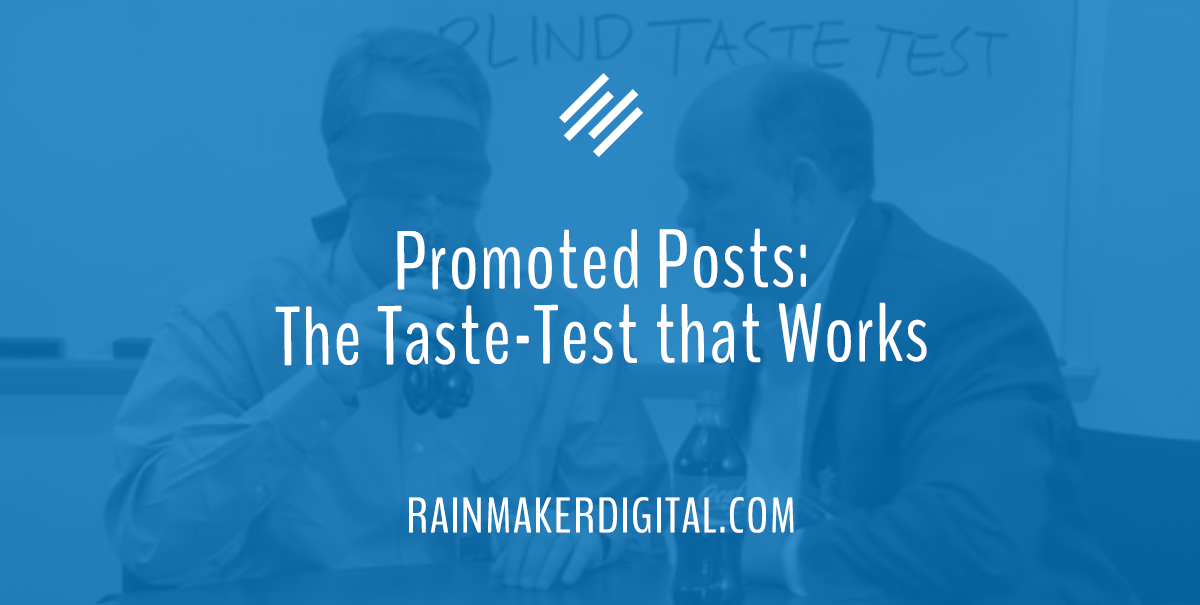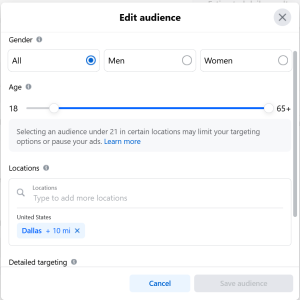Remember New Coke?
I don’t; I was born a little too late. But you can bet I’ve heard about it. Everyone has. It’s one of the biggest new product flops in history, born of corporate hubris and misguided focus group data.
In the late 1970s and early 1980s, Coca-Cola was under a lot of pressure from PepsiCo. Its market share was declining, and in head-to-head blind testing consumers preferred the taste of Pepsi to Coke, both in internal data and outside studies.
Coke did over 190,000 blind taste tests with a new, sweeter formula of its flagship soda. In 1985 they launched New Coke with great fanfare … and promptly ran into a brick wall of customer fury. They hadn’t realized that while consumers might prefer the taste in blind tests, there was an emotional connection to the product that couldn’t be quantified in a focus group setting. 79 days later, Coca-Cola capitulated and returned its original formula to the market as Coca-Cola Classic, re-taking a commanding lead in the soda market from PepsiCo. And it remains the market leader today.
How Brands Test Ideas
Coca-Cola isn’t the only company to whiff on a big idea; they’re just one of the few to have survived. Swinging and missing can be tough to come back from.
Traditionally, big brands use focus groups, surveys and other sampling methods to see whether their new idea will work. These are useful methods — but not infallible, as New Coke shows us. Thankfully, there are ways to test with a live market now without the same level of risk.
Given the immediacy of digital feedback, many brands now put new ideas on their website or socials as a “taste test” to see what happens, measuring the reaction live through engagement and traffic. There are multiple pitfalls with this approach. Maybe your audience isn’t comfortable with the new idea, or doesn’t trust your expertise in that new area. Maybe they fear change and think you’ll abandon them. Or maybe you’re just starting out and don’t have a big enough audience for a good sample size.
There is a way to have your cake and eat it too. You can test ideas on a live market while avoiding the pitfalls of “taste testing” with your current audience through one of our most powerful modern marketing tools: paid social media.
Content and Attention in a Fragmented Landscape
Attention is precious.
As brands get better and better at using social media and optimizing for search, the relative share of attention that’s up for grabs shrinks. When these were new frontiers, being a first mover on these platforms and just existing was enough; now you really have to work hard to stand out enough to get attention organically.
Audience attention is fractured between a lot of different platforms, too. The average Internet user browses 6.7 social media platforms every month; the number of people who only use one is miniscule. As social media platforms have matured, a landscape once dominated by Facebook has become much more open. Understanding where your audience is paying attention is just as important, if not more, than what you publish.
Content marketing has been the story of the last 20 years, driven mostly by Google’s rise to power. Though the way we publish and the formats we use change, everyone agrees you have to regularly publish content to succeed in the current marketing landscape. The issue now is that with the fracturing of attention and the increased competition for eyeballs, it’s a lot less likely that people will see your content organically.
Modern social media and search marketing has allowed us to test ideas in real time against a real audience. But organic social media and search marketing either can’t cut through the noise anymore to get clear data or is limited to the current audience.
Promoted posts are the solution.
Paying for social media reach to a specific target audience is a great way to gauge interest in a new business idea — even on platforms that traditionally might not be the right fit or historically haven’t been successful for your brand.
How Promoted Posts Work
Promoted posts are a form of paid social media that blur the line between “post” and “ad.” They show up on a user’s social media feed along with regular posts, instead of being shown in a different space.
Just out of curiosity, I decided to stop in the middle of writing this article and check my personal Facebook feed to see how long it took till I saw a promoted post.
Two. The second post is a page I don’t follow (and quite frankly, not a post I’m interested in). Not every post on Facebook that shows up in your feed without you asking for it is a paid post, but many of them are.
LinkedIn took longer (long enough that posting a screenshot is impractical); it was about 6 posts down that I saw a sponsored post. Unlike Facebook (which I use a lot less), LinkedIn has me pretty dialed in; most of the sponsored or suggested posts I see are relevant.
Almost all social media platforms allow you to tap into user feeds through promoted posts, including Facebook, LinkedIn, TikTok, Instagram, Twitter, and YouTube. An important benefit is that each allows you to target audiences. For example, in Facebook, I can choose to target by gender, age and location:
And under “Detailed Targeting,” I can drill down further. (If I use the Ads Manager I can get more detailed still.)
Demographics includes criteria such as marital status, employment and education level (from none to college-educated). Interests allows targeting based on the broad categories of pages users like and things they look at. Behaviors includes criteria like what browser they use and whether they’ve had an anniversary or started a business recently. These filters have changed dramatically over the past few years — and will continue to change. Still, they are the key to success. Define the “right” audience within the limits of the filters on the platforms of choice, develop a message for that audience, and test your idea.
Social media platforms make it easy to promote a post; they want your money. It’s not hard to get started. But if you need a little extra guidance on how to buy advertising on social media, see our article “Social Media Advertising, Simplified” or reach out to us directly.
Why Use Promoted Posts To Test Your Ideas?
Paying for visibility with target audiences gives you unfiltered insights. By limiting your promoted post to reach only the audience you think will be interested in your new idea, you can find out quickly if there’s any interest. And you cut through the noise of organic traffic because you’re paying to show up on people’s feeds, instead of waiting for the drip feed of organic response.
To get the most out of promoted posts, there are a few caveats to be aware of:
- Get your audience targeting right. Make sure you’re reaching the people you want to reach. For example, if you’re testing ideas for a local rock band and target people who follow concert venue pages, depending on your area, you might wind up with a bunch of classical or jazz fans who have zero interest. It doesn’t matter how great your offer is if you’re shooting at the wrong target.
- Get specific. The more you define your ideal audience member, the better. The broader your criteria, the less useful the data is — for one, you’ll spend more money, and for two, you’ll have a less accurate measurement of whether your idea works for the audience. When you’re testing a new idea and aiming it at a specific audience, have a specific persona in mind.
- Make your content count. Your creative has to be attention-getting and compelling. Notice we’re not saying “quality” — some audiences want more polish, while others prefer rawness. Match your creative to what your audience expects. Talk the way they talk.
Example: Joe’s Landscaping
Let’s illustrate how you can use this promoted post strategy to test a business idea.
Joe runs a landscaping business. During the summer, he makes a lot of money mowing, fertilizing, and maintaining garden beds. But all the work he does is by the job — he shows up when he gets a call, does the job, gets paid and then waits until he hears from his customers that they want their yard taken care of again. He decides to do something about that.
His current customers will keep paying him to take care of their yard on this ad hoc basis, but Joe has a new idea: a retainer-based lawn maintenance service. He has a customer persona in mind too: Gen X men still in the workforce (since they have less time to take care of the yard), with an income over $100,000 per year (more likely to pay for a retainer), who’ve shown an interest in pages about lawn, garden and yard care.
There’s a problem, though: if he just decides to start offering this to his current customers, he’s worried that they might think he doesn’t want their ad hoc work and look for another landscaper. His pursuit of higher-ticket clients may turn off his current base because they think he might ignore them in favor of steadier work. It’s a departure from what he’s currently doing, and he has real revenue concerns.
Rather than emailing his current customers, Joe uses Meta to test his idea with a promoted post. He matches his criteria to the new audience persona and excludes his current customers. He also targets new locations in richer suburbs of his city, where he knows there are nicer lawns and more finicky HOAs.
Once his campaign is complete, Joe reviews the results. If he sees high engagement on the post and books a lot of new clients, he’s proved his hypothesis. There is an audience that finds value in his idea. If not, he can rework the idea and test again — all without the risk of spending precious time and resources building web pages, cannibalizing his existing audience or diverting his attention from his current revenue streams.
Test Your New Ideas
Promoted posts are a great middle ground between the feasibility studies and focus groups favored by big brands and the fly-by-the-seat-of-your-pants ethos of many small businesses. They allow you to quickly invest in testing whether your idea is viable.
Don’t be a “New Coke.” Don’t launch new ideas without real-world testing them properly. Use promoted posts to figure out which ideas will succeed and which are duds. And if you need a hand, we’re here to help — just drop us a line, anytime.
Best Regards,
David Brandon
Copywriter
Rainmaker Digital Services



